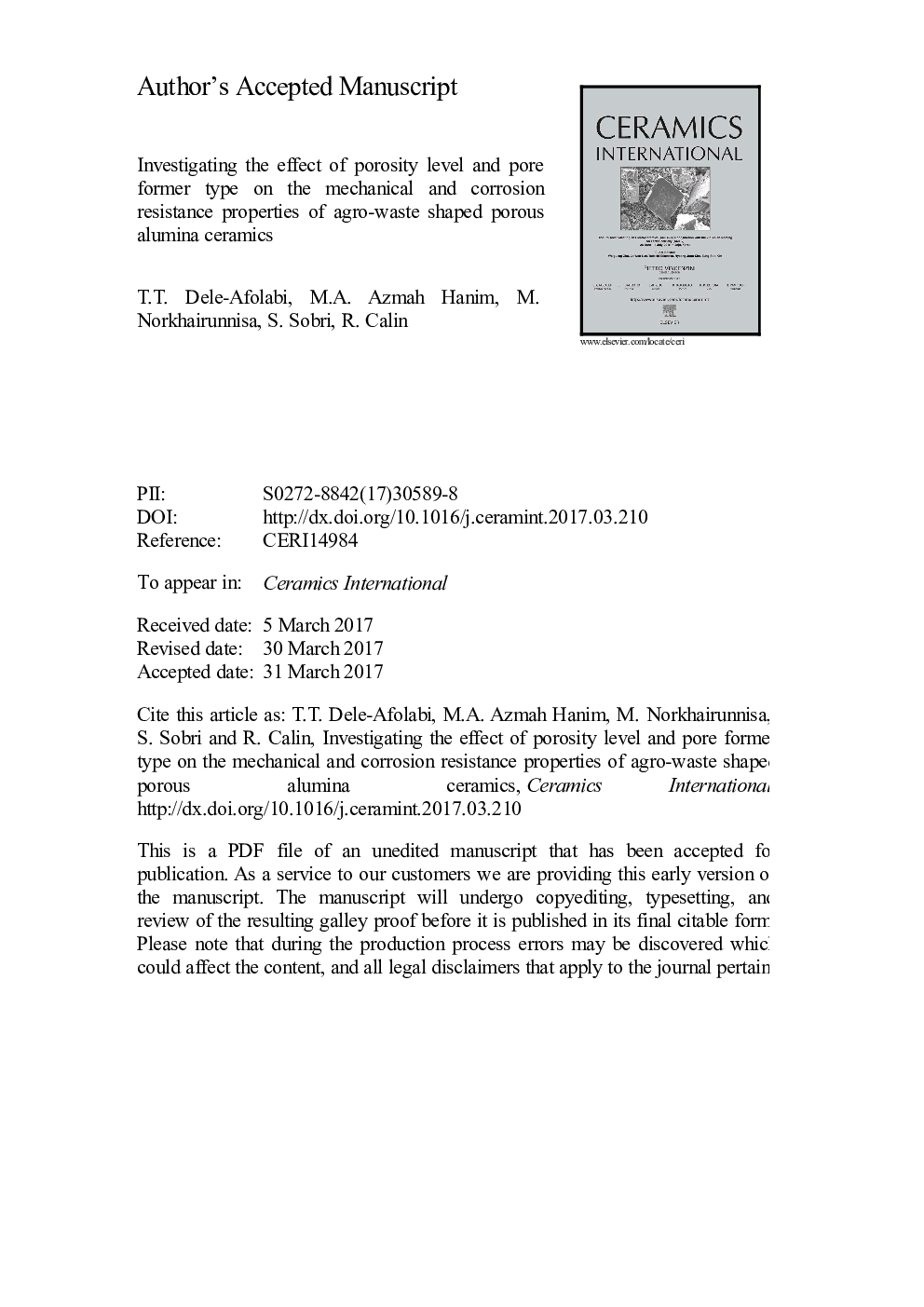| کد مقاله | کد نشریه | سال انتشار | مقاله انگلیسی | نسخه تمام متن |
|---|---|---|---|---|
| 5438334 | 1398183 | 2017 | 31 صفحه PDF | دانلود رایگان |
عنوان انگلیسی مقاله ISI
Investigating the effect of porosity level and pore former type on the mechanical and corrosion resistance properties of agro-waste shaped porous alumina ceramics
ترجمه فارسی عنوان
بررسی اثر سطح تخلخل و نوع سدیم منگنز بر خواص مقاومتی مکانیکی و خوردگی سرامیک آلومینیوم متخلخل زراعی
دانلود مقاله + سفارش ترجمه
دانلود مقاله ISI انگلیسی
رایگان برای ایرانیان
کلمات کلیدی
موضوعات مرتبط
مهندسی و علوم پایه
مهندسی مواد
سرامیک و کامپوزیت
چکیده انگلیسی
The strength integrity and chemical stability of porous alumina ceramics operating under extreme service conditions are of major importance in understanding their service behavior if they are to stand the test of time. In the present study, the effect of porosity and different pore former type on the mechanical strength and corrosion resistance properties of porous alumina ceramics have been studied. Given the potential of agricultural wastes as pore-forming agents (PFAs), a series of porous alumina ceramics (Al2O3-xPFA; x=5, 10, 15 and 20 wt%) were successfully prepared from rice husk (RH) and sugarcane bagasse (SCB) through the powder metallurgy technique. Experimental results showed that the porosity (44-67%) and the pore size (70-178 µm) of porous alumina samples maintained a linear relationship with the PFA loading. Comprehensive mechanical strength characterization of the porous alumina samples was conducted not just as a function of porosity but also as a function of the different PFA type used. Overall, the mechanical properties showed an inverse relationship with the porosity as the developed porous alumina samples exhibited tensile and compressive strengths of 20.4-1.5 MPa and 179.5-10.9 MPa respectively. Moreover, higher strengths were observed in the SCB shaped samples up to the 15 wt% PFA mark, while beyond this point, the silica peak observed in the XRD pattern of the RH shaped samples favored their relatively high strength. The corrosion resistance characterization of the porous alumina samples in hot 10 wt% NaOH and 20 wt% H2SO4 solutions was also investigated by considering sample formulations with 5-15 wt% PFA addition. With increasing porosity, the mass loss range in RH and SCB shaped samples after corrosion in NaOH solution for 8 h were 1.25-3.6% and 0.44-2.9% respectively; on the other hand, after corrosion in H2SO4 solution for 8 h, the mass loss range in RH and SCB shaped samples were 0.62-1.5% and 0.68-3.3% respectively.
ناشر
Database: Elsevier - ScienceDirect (ساینس دایرکت)
Journal: Ceramics International - Volume 43, Issue 12, 15 August 2017, Pages 8743-8754
Journal: Ceramics International - Volume 43, Issue 12, 15 August 2017, Pages 8743-8754
نویسندگان
T.T. Dele-Afolabi, M.A. Azmah Hanim, M. Norkhairunnisa, S. Sobri, R. Calin,
